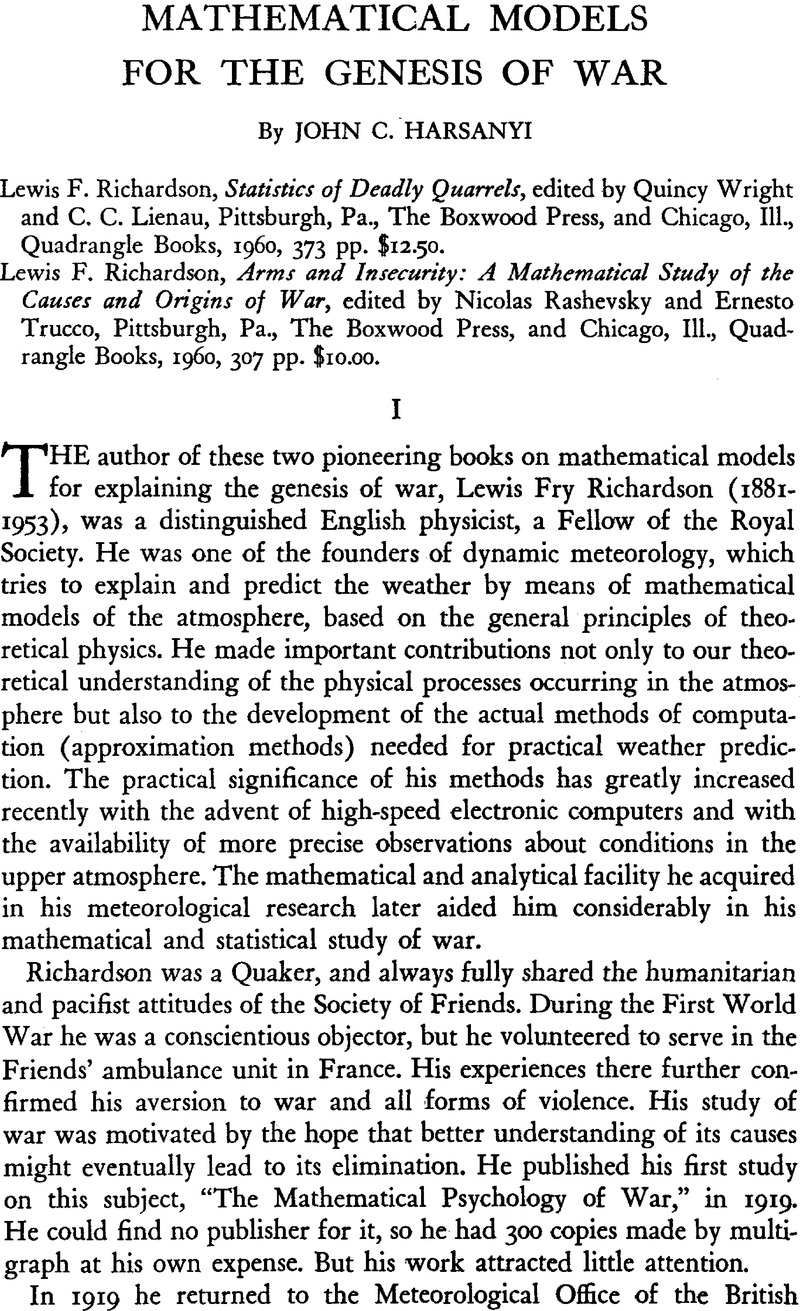Article contents
Mathematical Models for the Genesis of War
Review products
Published online by Cambridge University Press: 18 July 2011
Abstract

- Type
- Review Articles
- Information
- Copyright
- Copyright © Trustees of Princeton University 1962
References
1 Cf. Rapoport, Anatol, “The Stochastic and the ‘Teleological’ Rationales of Certain Distributions and the So-called Principle of Least Effort,” Behavioral Science, II (April 1957), pp. 147–61Google Scholar; Simon, Herbert A., Models of Man, New York, 1957, ch. 9, pp. 145–64Google Scholar; Zipf, George Kingsley, Human Behavior and the Principle of Least Effort, New York, 1949.Google Scholar
2 These are based on the size distribution of street gangs in Chicago during the great depression, and on the size distribution of raiding bands in Manchukuo during the Japanese occupation.
3 Assuming a stationary distribution, this would be the case, e.g., if in any particular war the number of fatalities per time period were roughly constant, and if the duration of wars followed an exponential distribution independent of the number of fatalities per time period (i.e., if large-scale and small-scale wars followed roughly the same exponential distribution).
4 Duncan Luce, R. and Raiffa, Howard, Games and Decisions, New York, 1957, p. 95.Google Scholar
5 Rapoport argues for the same point on a somewhat different basis in “Lewis F. Richardson's Mathematical Theory of War,” Conflict Resolution, 1 (September 1957), pp. 249–99.
- 9
- Cited by


